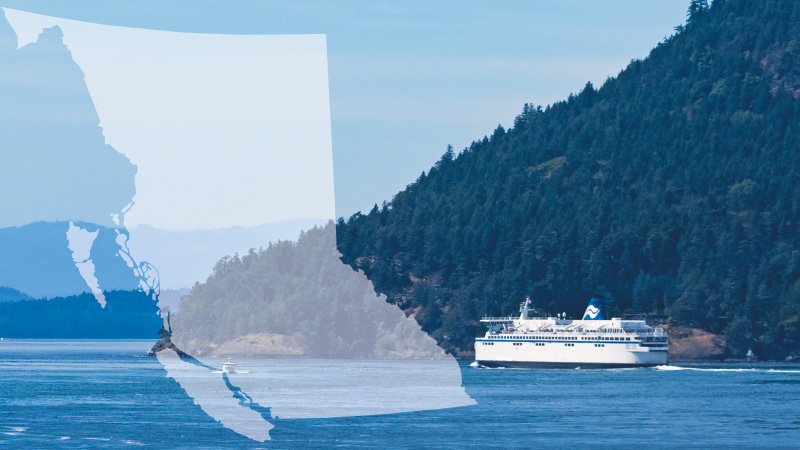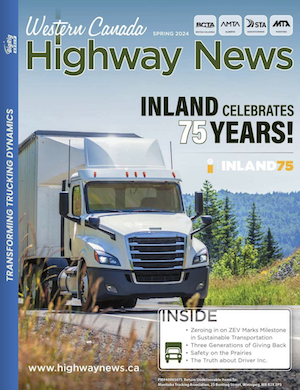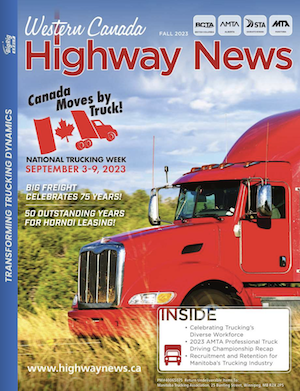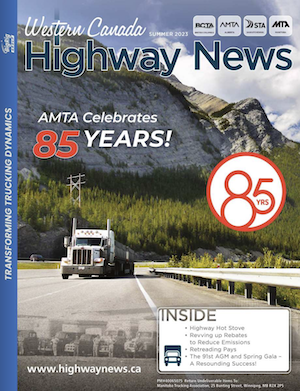British Columbia Trucking Association
Each year, approximately $81 billion of goods are transported via BC’s highways. Recognizing the crucial role that well-maintained highways play in the success and safety of the trucking industry, BC Trucking Association (BCTA) recently conducted a survey among its motor carrier members to inquire about their infrastructure investment preferences.
The survey gauged their priorities and concerns regarding the province’s infrastructure and delved into the pressing needs and critical focal points as identified by members. The findings offer invaluable insights, shedding light on essential areas requiring attention and improvements to fortify the efficiency and safety of the trucking industry. The results of this survey stand as a vital reference point for policymakers, industry leaders, and BCTA, guiding the development of strategic infrastructure improvements across the province.
Infrastructure Investment Priorities
In the survey, respondents were given the opportunity to highlight their infrastructure investment priorities by selecting up to five options from a predetermined list or offering their own suggestions. The rankings, based on the number of responses received, indicate that the top three priorities are as follows:
1. Fraser Valley: First, the Fraser Valley emerged as the leading concern, reflecting the region’s significant
role in the transportation network.
A government-conducted traffic analysis on Highway 1 immediately west of 264th Street in Langley found that traffic congestion on this segment results in 1.2 million hours of delays for commuters, commercial traffic, and tourists annually. The daily traffic volume in this corridor is extremely high, at more than 80,000 vehicles. Of these vehicles, about 6,000 are commercial trucks carrying goods and cargo that are vital to the provincial economy and Canada’s Asia Pacific Gateway. 70% of respondents indicated six-laning Highway 1 from Hope to 264th Street in Langley as the number one priority, including building overpasses to a
six-metre height minimum.
2. Rest Areas: Second, a province-wide emphasis was observed, with 60% focusing on improving and augmenting rest areas. This priority encompassed various improvements, including enhanced wireless connectivity, improved cleanliness, and the availability of garbage and recycling facilities, along with advocating for commercial vehicle priority access. When asked for their top five rest area priorities, respondents indicated the following top five locations:
• Highway 1
• Highway 5
• Highway 16
• Highway 3
• Highway 97
3. Lower Mainland/Fraser Valley: Third, a notable focus was place on the Lower Mainland/Fraser Valley, with 49% responding that four-laning 16th Avenue, between Highway 99 and Marshall Road, should be a priority.
Truck Parking Facilities
As demonstrated in the first question, the collective voice of members affirmed the pivotal role that well-equipped and strategically located rest areas play in addressing the needs and safety concerns of the trucking industry. As part of the survey’s inquiry into preferred truck parking facilities, respondents were prompted to rank their choices in order of preference. The analysis revealed a clear emphasis on specific locations. The most favoured truck parking facility, securing the top spot, was identified as the 264th Street interchange. Following closely in second place, the Mount Lehman interchange and intersection garnered notable attention as a preferred parking location. The survey participants also underscored the importance of the Sumas Way facility, which secured third position in the rankings, highlighting the significant need for efficient and accessible truck parking areas within these key locations.
BC Ferries
As part of the survey’s comprehensive assessment, respondents were queried about their support for BC Ferries implementing permanent commercial late-night sailings. In the fall of 2021, BC Ferries conducted a trial commercial late-night sailing between Tsawwassen (departing at 9:15 pm) and Duke Point (arriving at 12:15 am), testing its viability and response from the industry. The findings unveiled an overwhelming majority in favour of this initiative, with an impressive 77% of respondents expressing their support for the establishment of permanent commercial late-night sailings for this route. The same question was asked regarding a permanent late-night sailing between Tsawwassen and Swartz Bay, yielding yet another majority response – 73% were in favour. The survey feedback accentuated the keen interest and potential benefits perceived by the trucking community in having extended ferry services during late hours, signalling a strong endorsement for this endeavour.
As the analysis of the BCTA member survey illustrates, the prioritization of infrastructure investment remains a paramount concern for the trucking industry in BC. The responses provided invaluable insights into the pressing needs and preferences within the province’s transportation network. From highlighting essential improvements in highway infrastructure to the critical importance of efficient truck parking facilities and supply chain efficiency with late-night sailings, the survey outcomes offer a comprehensive perspective on the diverse and vital areas that demand immediate attention. This collaborative effort, involving the association and its members, serves as a compelling roadmap for government, emphasizing the necessity of addressing these priorities to enhance safety, efficiency, and the overall success of our industry in our province.


 1-866-985-9791
1-866-985-9791



